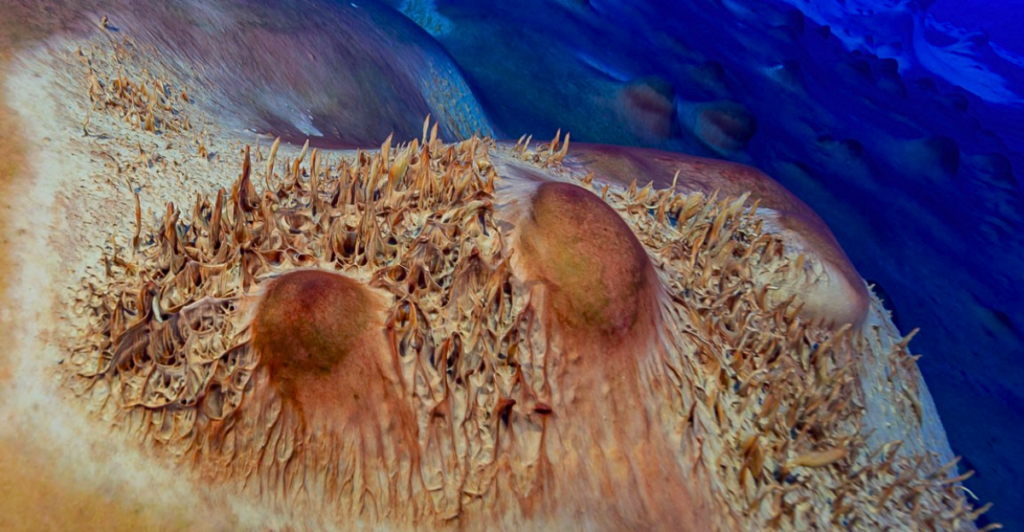
Mono Lake, located in California’s Eastern Sierra Nevada, is renowned for its unique ecosystem characterized by extreme salinity and high levels of toxic substances. This remarkable environment has now become the focus of groundbreaking research from the University of California, Berkeley. Scientists have discovered a new species of choanoflagellate, named Barroeca monosierra, which provides significant insights into the early evolution of life on Earth. This single-celled organism not only survives in harsh conditions but also hosts its own microbiome, offering a window into the symbiotic relationships that may have shaped the development of multicellular organisms.
The Unique Ecosystem of Mono Lake

Mono Lake is famous for its stunning tufa formations and diverse populations of brine shrimp and alkali flies. These organisms have adapted to thrive in the lake’s hypersaline and alkaline waters, which also contain traces of arsenic and cyanide. The extreme conditions create a unique habitat that supports only the hardiest life forms, making it an intriguing site for scientific exploration.
Discovery of Barroeca monosierra
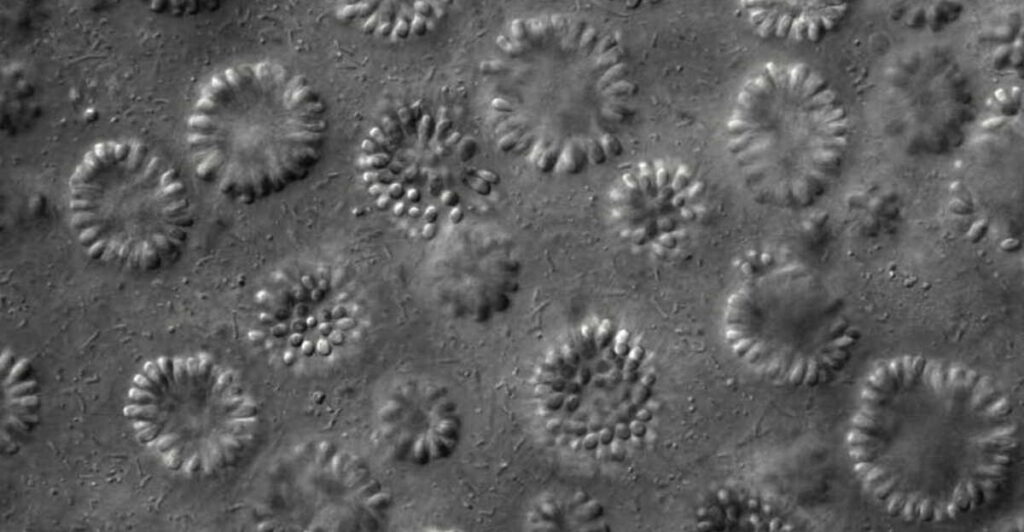
Researchers from UC Berkeley recently identified Barroeca monosierra, a microscopic choanoflagellate species that holds special significance in evolutionary biology. Choanoflagellates are recognized as the closest living relatives to animals, and their study can illuminate the transition from single-celled to multicellular life forms. The discovery marks a pivotal moment in understanding how early life evolved under extreme conditions.
Significance of Choanoflagellates
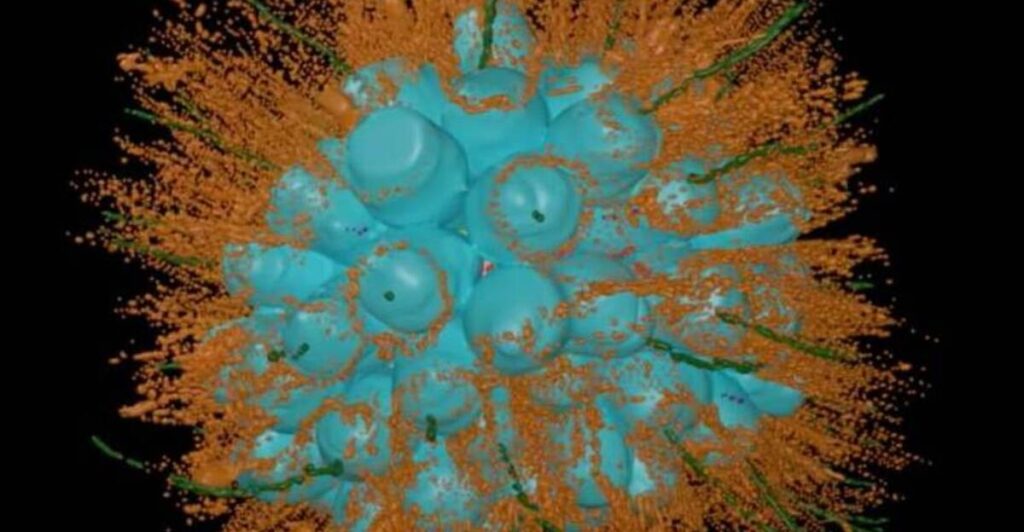
Choanoflagellates serve as valuable models for studying early life due to their unique biological characteristics. While they are not classified as animals, they exhibit behaviors similar to those seen in animal embryonic development. This makes them crucial for understanding the evolutionary processes that led to the emergence of multicellular organisms.
Unique Microbiome Association
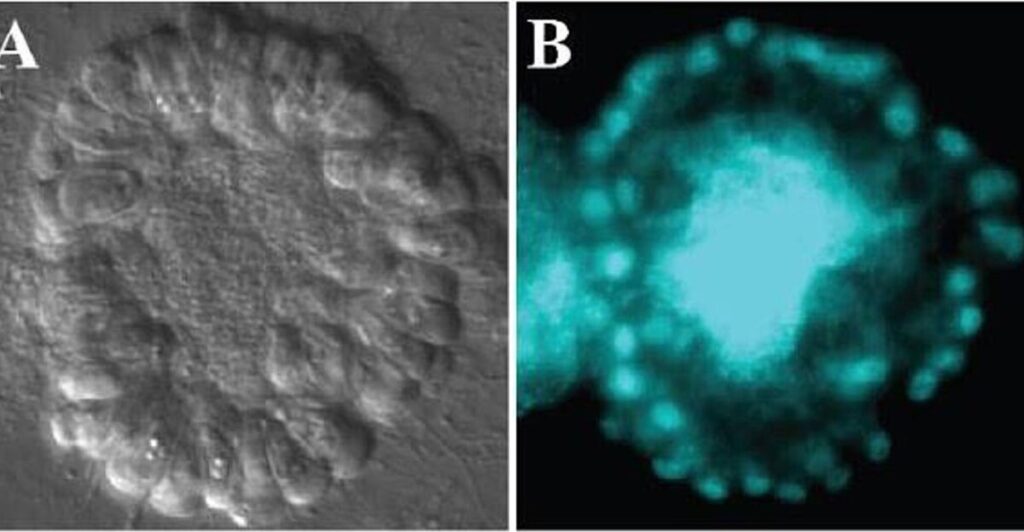
What distinguishes B. monosierra from other choanoflagellates is its ability to form stable associations with bacteria, rather than merely consuming them. This unique interaction represents the first documented case of a choanoflagellate hosting a microbiome, providing researchers with an unprecedented opportunity to study these early symbiotic relationships.
Implications for Evolutionary Biology
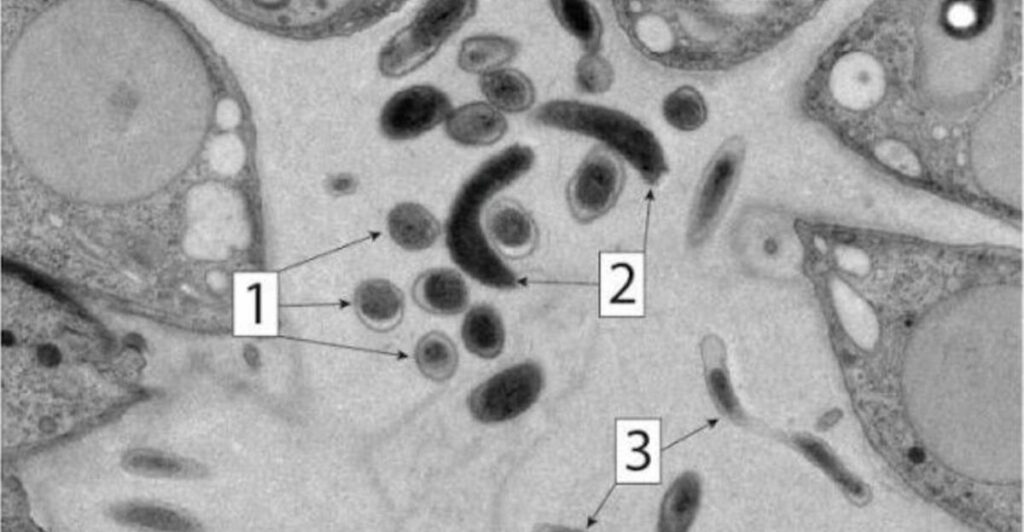
The presence of a stable microbiome within B. monosierra suggests that such interactions may have played a critical role in shaping the evolution of complex life forms, including animals. Understanding these dynamics could reveal how single-celled organisms adapted to their environments and interacted with other life forms in ancient ecosystems.
Research Methodology
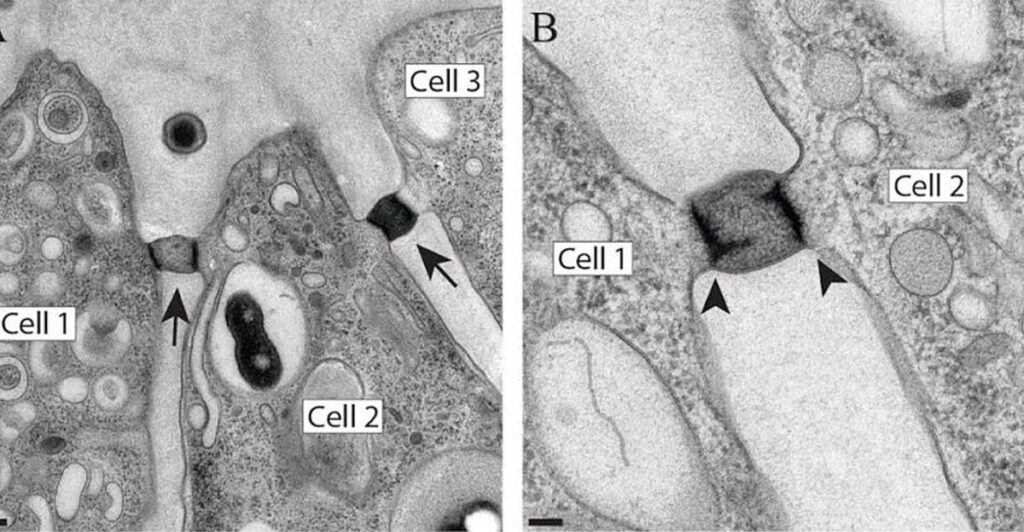
The research team, led by Nicole King, utilized metagenomic techniques to analyze the microbial communities associated with B. monosierra. This approach allowed them to identify specific bacterial species present both in Mono Lake water and within the choanoflagellate colonies. The findings indicate that certain bacteria thrive better within the oxygen-poor environment created by these colonies.
Historical Context of Discovery

The journey to discovering B. monosierra began nearly a decade ago when graduate student Daniel Richter collected water samples from Mono Lake during an expedition. Recent studies revived these samples, revealing an abundance of choanoflagellates that had previously gone unnoticed. The discovery highlights the importance of long-term ecological research and its potential to uncover new species.
Challenges of Mono Lake’s Environment
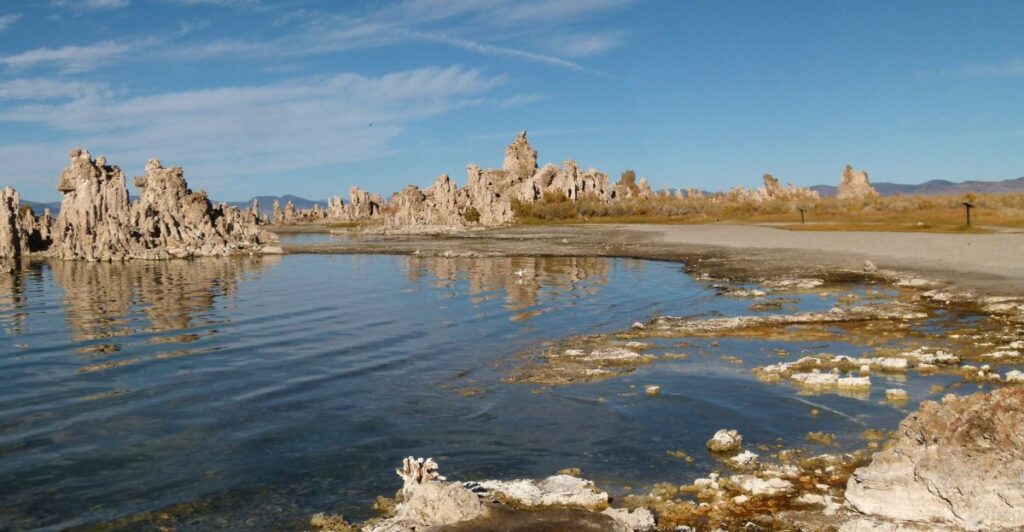
Mono Lake’s extreme environment poses significant challenges for most organisms. With high salinity and toxic elements present, only a few extremophiles can survive and thrive here. The resilience demonstrated by B. monosierra provides insights into how life can adapt to harsh conditions, shedding light on evolutionary mechanisms that may have been at play billions of years ago.
Future Research Directions
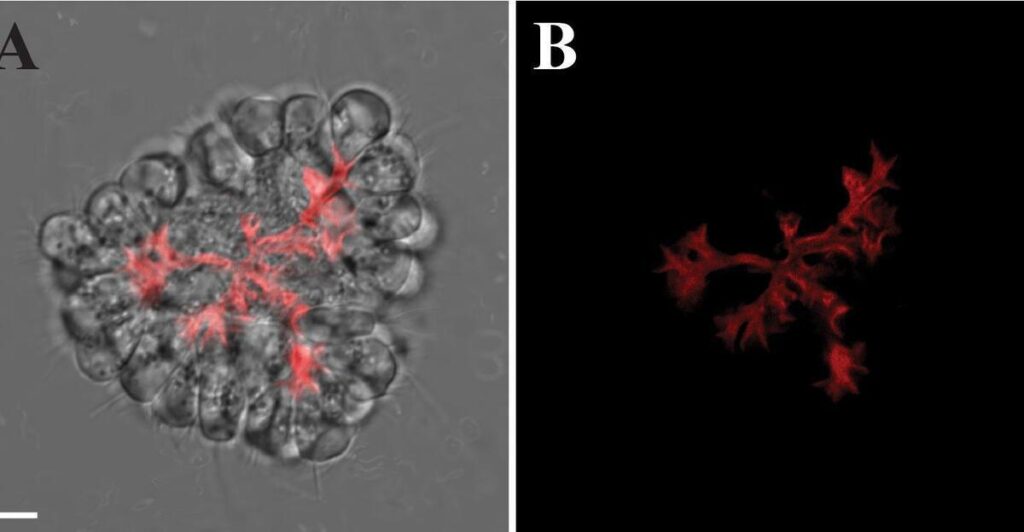
The discovery of B. monosierra opens new avenues for research into early life forms and their interactions with bacteria. Future studies could explore how these relationships influenced the evolution of multicellular organisms and contributed to the development of complex ecosystems on Earth.
Broader Implications for Evolution
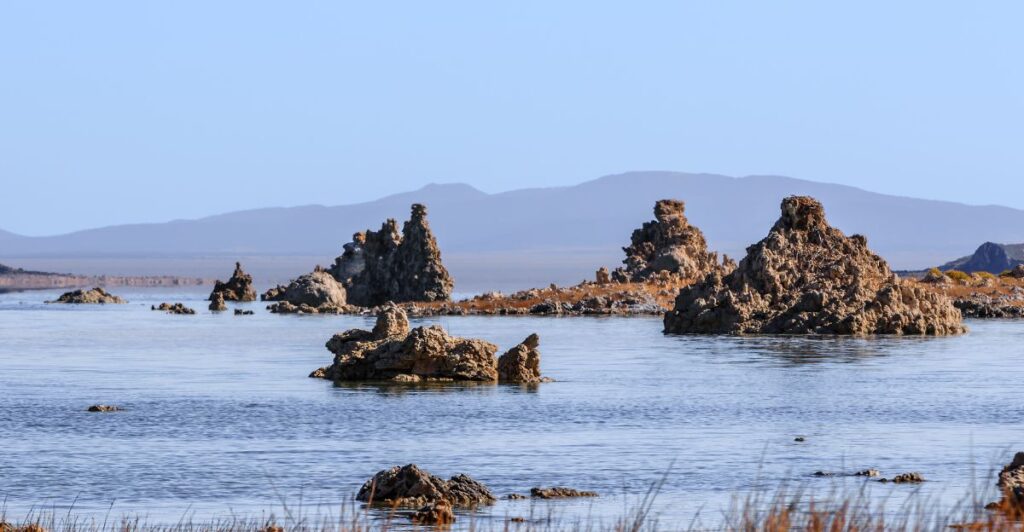
These findings could also help scientists better understand the origins of biodiversity and the evolutionary strategies that allowed life to persist under harsh conditions. Mono Lake continues to serve as a vital window into Earth’s ancient past.
A Significant Breakthrough

The identification of Barroeca monosierra in Mono Lake is a significant breakthrough in understanding the origins of multicellular life. By studying this unique choanoflagellate and its microbiome, researchers can gain valuable insights into the evolutionary history that led to the emergence of animals. As scientists continue to explore this extraordinary ecosystem, they may unlock further secrets about life’s resilience and adaptability in extreme environments.
Discover more of our trending stories and follow us to keep them appearing in your feed

After 800 Years of Silence, This American Volcano Shows Signs of Activity
California Is Breaking Apart: A Fault Line Is Forming Faster Than Anyone Predicted
There Will Be Eruptions”: Concerns Mount as Yellowstone Supervolcano Activity Shifts
Deepest Hole On Earth Permanently Sealed After 2 Billion Year Old Discovery
References:
Reference 1
Reference 2
Reference 3
This article first appeared here
Stay connected with us for more stories like this! Follow us to get the latest updates or hit the Follow button at the top of this article, and let us know what you think by leaving your feedback below. We’d love to hear from you!







